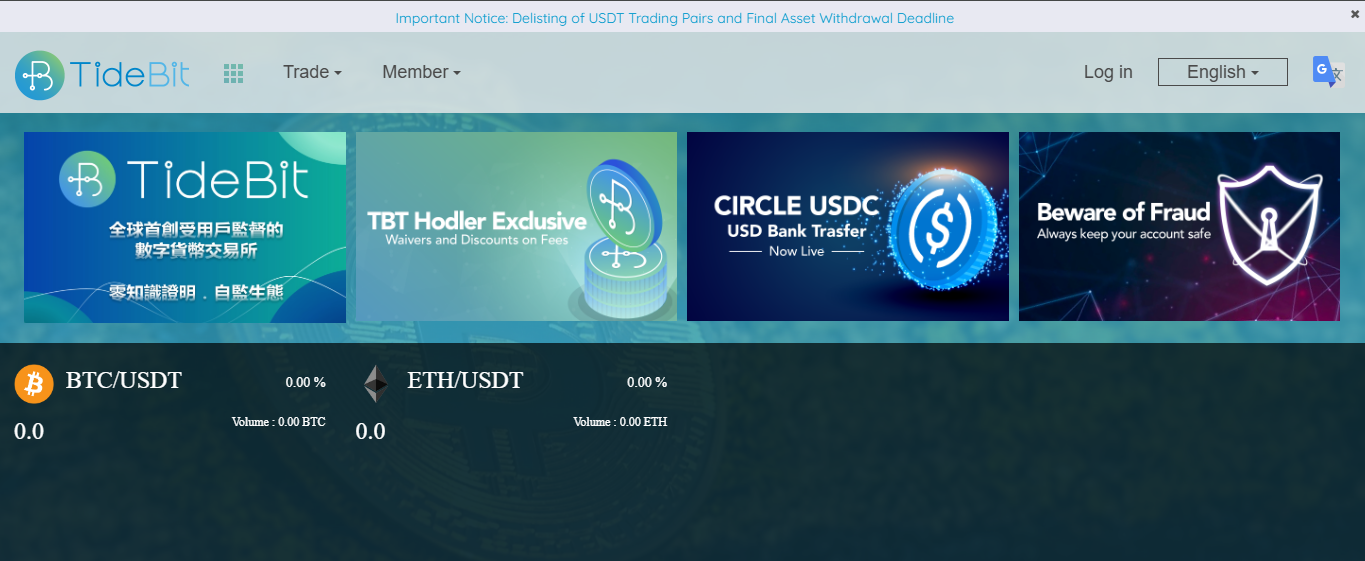Tidebit Review - once active, now fading

Tidebit launched around 2017, built in Hong Kong, with a kiosk-style rollout featuring physical stores and fiat-to-crypto access. For a time, it had a decent niche - spot trading with a handful of coins - and users could deposit cash offline via branches in certain regions. But signs have emerged that the exchange is flagging and possibly shutting down.
A shrinking footprint
At its peak, Tidebit offered trading in around eight coins and supported deposits via bank transfers. It sometimes reached daily volumes near seven hundred thousand US dollars. But the growth flattened early, and trading activity stayed modest at best
Recent data labels Tidebit as “inactive,” with daily volumes slipping to zero despite occasional access. That’s a strong sign that the platform struggles to maintain any meaningful user base.
Interface and user experience
The platform was clean and mobile-friendly, with simple spot charts and order screens. It required full KYC before trading. Deposit via wire transfers was supported, though financing options like credit cards were missing.
Offline “crypto concept stores” opened in places like Wan Chai and Tsim Sha Tsui. They integrated cash-in options into physical locations - a rare setup for a crypto exchange
What went wrong
Despite these innovations, activity failed to stick. The chain of inactivity led to a near-zero daily volume. Even core trading features became unavailable or unresponsive . Declining web traffic and a lack of visible transactions led rating platforms to mark it as dead or inactive .
Regulation and trust
Tidebit never showed strong licensing signals. It lacked clear oversight or a public reserve audit. Messaging platforms and community sources offered no meaningful updates or governance transparency.
It claimed innovations like blockchain-based audit engines, but none of this translated into active trading or visible oversight
Signals from users
User ratings were mixed. With only a few scattered reviews, users mentioned a frustrating interface and a lack of basic trading tools . That silence from the broader community often means low confidence and a lack of active user engagement.
Quick breakdown
Who might have used it
Tidebit once served casual investors seeking a local fiat access point in Hong Kong. The concept stores were innovative. But activity levels suggest it never became a long-term hub for trading.
Who should avoid it now
Anyone serious about crypto should steer clear. The platform is flagged inactive. Liquidity is zero. No regulatory confidence. No traffic. No future roadmap. Even basic trading may fail to work, and there’s no support to reach out to.
Final verdict
Tidebit is essentially a defunct exchange. While once built around cash access and a small coin list, it now shows no actionable volume, no trust, and likely no active service. If you stumble onto it, don’t deposit anything. For anyone wanting a working and reliable exchange, other platforms offer far more stability and transparency.
Disclaimer
“This content is for informational purposes only and does not constitute financial advice. Please do your own research before investing.”
.png)







%203.svg)
%203.svg)




















